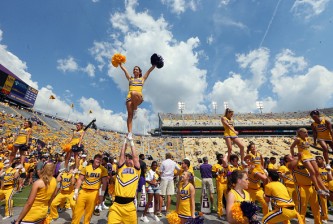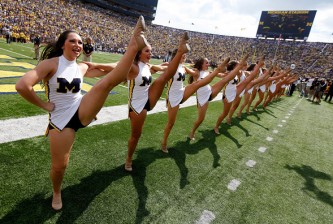This week has been Bizarro World in sports. First, there was word that Oprah Winfrey had interviewed disgraced cyclist and admitted PED user Lance Armstrong, a two and a half hour interview that would air over two nights. Then mid-week, we learned through Deadspin about Notre Dame linebacker Manti Te’o’s girlfriend hoax that was perpetuated for two years. And no matter how far the story progressed, the more confusing it became.
Eventually, Te’o agreed to an interview, however, no video cameras were allowed, hampering any chance of discerning his emotions, his reaction to questions, any inflection. While some audio excerpts were released, they certainly were not the same as video.
But let’s backtrack to the Lance Armstrong interview with Oprah Winfrey. If Armstrong thought he would regain the respect of the American people by doing the interview, he was certainly mistaken. In the first 90 minutes that aired on Thursday, Armstrong came off as wooden, unfeeling and unemotional. Winfrey did her best to draw him out, but as we have seen in the past, Armstrong wants to have control of the situation and he looked as if he had rehearsed his answers, trying to keep to a script and not allowing to himself to be human.
In addition, when asked about the people he had hurt along the way of winning seven tainted Tour de France titles, Armstrong did not seem remorseful. He didn’t seem to be apologetic to his former masseuse whom he branded a whore and a drunk. And he also failed at an attempt at humor in saying he did not call Betsy Andreu, the wife of a former teammate, fat.
In the second hour that was unveiled Friday, Armstrong finally showed some humanity and remorse, especially in discussing how he had revealed his lies to his son and twin daughters. However, any chances of forgiveness quickly dissipated when he lied about being clean in the 2009 and 2010 Tours (refuted by evidence from the US Anti-Doping Agency) and denied a claim from USADA that Armstrong tried to donate money to the agency despite evidence to the contrary.
Winfrey did reasonably well. She showed that she had done her research on the subject and did maintain control throughout the interview. There were times when she could have asked some follow-ups to Armstrong, but overall, I thought she handled the entire interview decently.
Reaction to Armstrong has not been kind. Of course, Betsy Andreu on CNN’s Anderson Cooper said she didn’t see any remorse from him. CNN legal analyst Jeffrey Toobin called Armstrong’s interview “a big mistake” and wondered what exactly he was trying to accomplish.
While many supporters will still point out what Armstrong has meant to the cancer survivors, any positives he has done have been outweighed by the immense negatives to the people lives he has destroyed and the lie he maintained for so many years. Plus saying he deserved to have the USADA competitive ban lifted won’t win him much support. Overall, Armstrong gave us more questions to the answers he gave and left viewers with a bad taste in their mouths.
Now, onto Manti Te’o whose first interview came late Friday night with ESPN’s Jeremy Schaap. While Schaap called Te’o credible in his denials that he was not in on the girlfriend hoax, we have only seen various pictures released by ESPN and a few pieces of audio. And while Te’o sounds convinced that he’s wasn’t part of the scam, the inconsistencies of his answers to the timeline and questions about Lennay Kekua only raise more doubt.
The idea not to bring cameras to the interview came from Te’o’s camp which is being led by the Creative Arts Agency, not Notre Dame. It left Schaap having to recap what was said in two long rambling segments, a 16 minute block at 1 a.m. ET on ESPN’s SportsCenter and 13 minutes at 2 a.m. ET. And while Schaap did his best to try to provide information as best as he could remember, three ledes were buried. One, that Ronaiah Tuiasosopo apologized to Te’o via Twitte, two that Te’o didn’t believe Kekua was a hoax until this week and three, Te’o tailored his stories about Kekua to the media to fit whatever they wanted.
Schaap was left in a difficult position in trying to recap everything as best as he could. But Te’o’s people did not do him any favors by allowing a camera in the room. If the interview were done strictly for print or online, this would have been a different situation, but for a TV network, by not having video, it makes Te’o look as if he’s hiding something. Schaap is a credible reporter and by saying he believes Te’o, that gives the young man a decent leg to stand on, but it still leaves doubt for those who want to believe him.
I understand ESPN capitulating to Te’o’s request in wanting the interview, but they were handicapped in not having a camera and not by not having the ability to record the entire interview on audio tape. By being allowed to release only various audio excerpts, it makes it appear as if Te’o’s PR team was in control. Certainly, Te’o’s team did not do him much good by not advising him to go on-camera to make his message more credible.
The answers from the 21 year old NFL hopeful only leaves more questions behind and until he gives an on-camera interview, people will remain skeptical.
It’s been a strange week for sports journalism. We need some more perspective on this before we see the true impact of what these interviews have meant for the sports media.






















